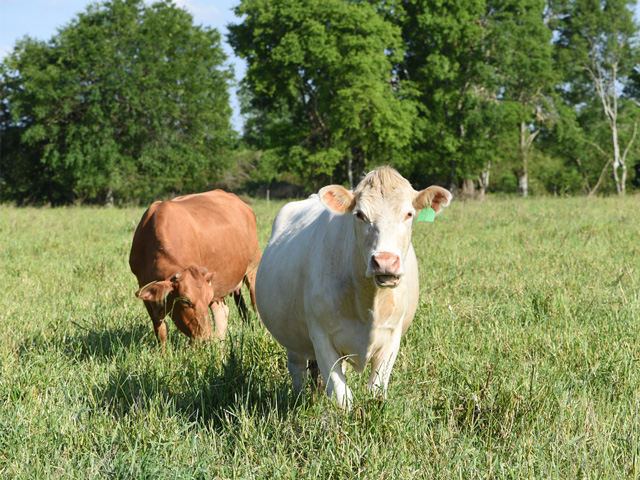Think Ahead
Summer Stockpiling Saves
At the Virginia Tech Shenandoah Valley Agricultural Research and Education Center (SVAREC), cutting down on hay feeding days is a priority. For years, area producers have relied on fall stockpiling of tall fescue to extend grazing systems, but there is a drawback. Forage supplies can get pretty tight while saving acres for stockpile or standing hay.
David Fiske, former superintendent of SVAREC, who unfortunately passed away in November 2018, found a solution with summer stockpiling. The practice continues today as a legacy to his hard work.
Gabe Pent, superintendent now, notes the combination of summer and fall stockpiling stretched the grazing season at SVAREC by an average of 90 days, usually into mid-January.
P[L1] D[0x0] M[300x250] OOP[F] ADUNIT[] T[]
"That means we can graze an average of 280 days instead of the typical 210 days," he says. In dollar terms, that's a $36 per cow savings by grazing rather than feeding hay.
"In our area hay was $120 a ton if you were buying it in 2018. That year we estimated we saved $1.37 per head per day in feed costs for 70 days. That's $96 a head."
Pent and his crew use eight paddocks, two acres each, for stockpiling. They keep eight of their 180 Angus-cross cows on those 16 acres year-round. Here they practice both summer and fall stockpiling, as well as rotational grazing.
They start summer stockpiling in the spring, usually mid-April, when tall fescue typically begins to produce an overabundance of forage. They take cattle off 25% of the pasture, or in this case, two paddocks, and let it grow. In mid-August, they let cattle back on the forage they stockpiled. At that point, strip grazing, using a single strand of temporary electric fence to portion out two to three days of grazing, is the management tool of choice.
While the summer-stockpiled fescue isn't pretty to look at, it runs 59% to 74% total digestible nutrients (TDN), enough to support a dry or lactating cow.
While the cows are benefiting from the summer stockpile in August, September and on into October, the cattle crew applies nitrogen to another 50% of their paddocks. These are set aside for fall and winter stockpiling. When summer stockpiles run out, the fall stockpile is ready to strip graze.
Pent says, "Feeding cattle is the most costly part of a cattle operation. Here in Virginia, it is 50% to 70% of the total cost. Grazing is significantly cheaper than feeding hay. The longer we can graze and let animals harvest the forage, the better."
For more information on the Graze 300 VA program: http://ext.vt.edu/…
(c) Copyright 2020 DTN, LLC. All rights reserved.






